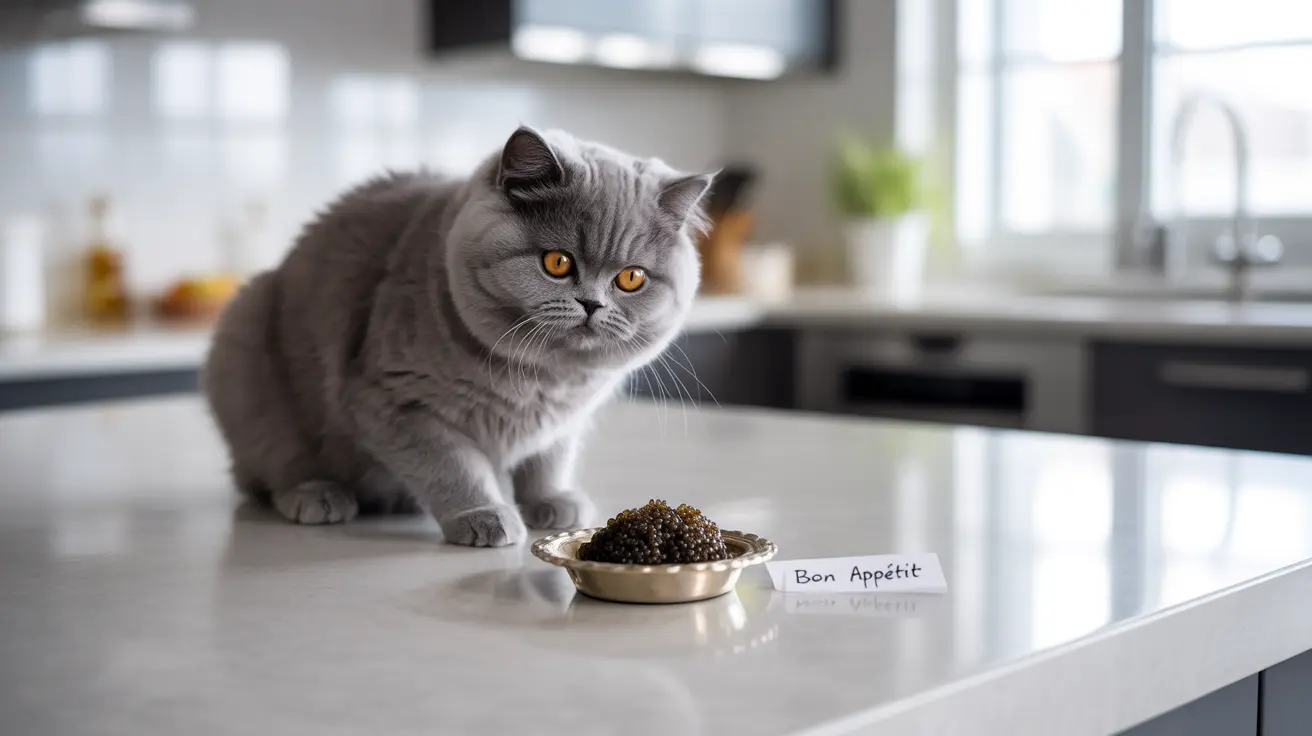Understanding Caviar and Its Types
Real caviar consists of salt-cured fish eggs (roe) primarily from sturgeon species. It's rich in proteins, omega-3 fatty acids, and various vitamins and minerals. Artificial caviar, on the other hand, is made from fish extracts and various additives, offering significantly fewer nutritional benefits.
Commercial pet foods that contain caviar typically use small amounts as a flavoring agent or nutritional supplement, ensuring the caviar is processed safely for feline consumption.
Safety Concerns When Feeding Caviar to Cats
While cats can technically consume caviar, several safety concerns warrant careful consideration:
Bacterial Risks
Raw caviar may contain harmful bacteria like Salmonella and Vibrio, which can cause severe digestive issues in cats. Even premium caviar isn't guaranteed to be bacteria-free, making it a potentially risky treat.
Salt Content
The high sodium content in caviar poses a significant risk to cats. Excessive salt intake can lead to:
- Dehydration
- High blood pressure
- Kidney problems
- Sodium poisoning in severe cases
Heavy Metal Concerns
Like many seafood products, caviar can contain trace amounts of heavy metals. While the concentrations are usually low, regular consumption could potentially lead to accumulation in your cat's system.
Nutritional Benefits vs. Risks
Real caviar does offer some nutritional benefits for cats, including:
- Essential omega-3 fatty acids
- High-quality protein
- Vitamin B12
- Selenium and other minerals
However, these benefits are outweighed by the risks when considering:
- The amount needed for nutritional benefit exceeds safe consumption levels
- The high salt content makes it unsuitable for regular feeding
- More appropriate sources exist for these nutrients
Safer Alternatives to Caviar
Instead of caviar, consider these safer seafood options for your cat:
- Cooked, plain salmon
- Small amounts of cooked tuna
- Commercially prepared fish-based cat treats
- Omega-3 supplements specifically formulated for cats
Guidelines for Feeding Caviar to Cats
If you decide to offer caviar to your cat, follow these essential guidelines:
- Limit portions to tiny amounts (less than 1/4 teaspoon)
- Offer no more than once monthly
- Ensure fresh water is always available
- Monitor for any adverse reactions
- Avoid completely if your cat has kidney or heart issues
Frequently Asked Questions
Can cats safely eat real or artificial caviar as a treat?
Cats can eat small amounts of both real and artificial caviar occasionally, but it should never be a regular treat due to high salt content and potential bacterial risks.
What health risks should I be aware of before feeding my cat caviar?
The main risks include bacterial contamination, excessive sodium intake, potential heavy metal exposure, and digestive issues. Cats with existing health conditions are particularly vulnerable.
Does caviar provide any nutritional benefits for cats, like omega-3 fatty acids?
While caviar contains beneficial omega-3 fatty acids and proteins, the amounts needed for nutritional benefit would exceed safe consumption levels for cats.
Are there commercial cat foods containing caviar that are safe and nutritious?
Yes, some commercial cat foods contain caviar in safe, processed forms. These products are specifically formulated to meet feline nutritional requirements while minimizing risks.
What are safer seafood alternatives to caviar for cats?
Safer alternatives include cooked salmon, tuna, or specialized fish-based cat treats. These options provide similar nutrients with fewer risks when prepared properly.
Conclusion
While cats can have caviar in very small amounts, it's not recommended as a regular treat. The potential risks generally outweigh the benefits, and there are safer ways to provide your cat with similar nutrients. If you want to treat your feline friend, stick to veterinarian-approved options or commercial cat treats specifically formulated for feline health.






